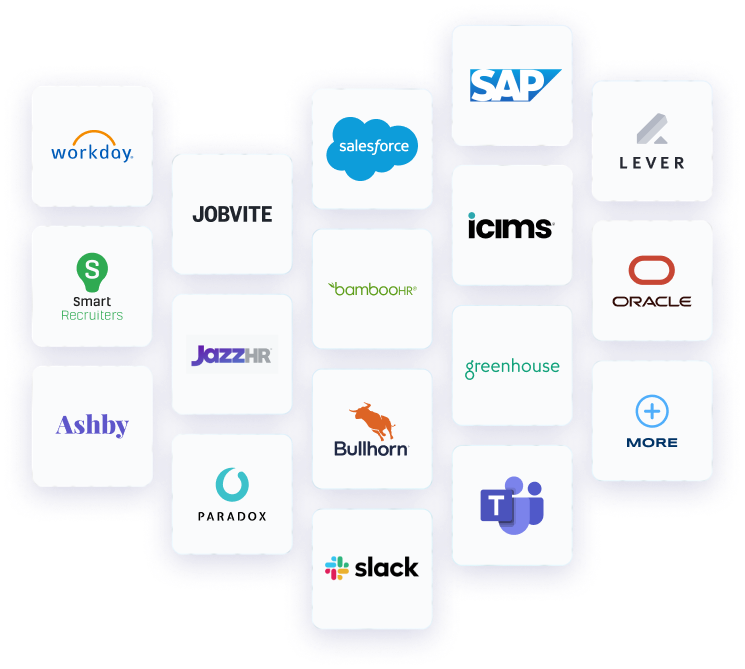

Crosschq Blog
Recruiting KPIs for the Modern Company

Advancements in the recruiting world have made it possible for recruiters to improve their quality of hire, find the best hiring pipelines, make better predictions on candidate compatibility, and cultivate diverse, winning teams.
Part of what makes these capabilities possible has to do with our ability to measure and track data. Recruiting insights and modern analytics can now be read and understood easily, allowing you to get an overview of what’s working and what isn’t.
Below we’ll look at recruiting KPIs that you should be looking at as a modern hiring organization.
What is a recruiting KPI?
Key performance indicators (KPIs) are the most important metrics you should be tracking and evaluating your performance. KPIs are usually provided to you by your recruiting software, and they should be easy to read with visuals and automated reporting. Your metrics are essential for a number of reasons. They help you understand how effective your recruiting methods are, and they provide you with visuals and easy-to-read reports that you can share with team members, leaders, and executives.
What are traditional recruiting KPIs?
Traditional recruiting KPIs have been used for decades to help hiring teams translate data to action. While a lot of these metrics and KPIs are valuable to understanding your hiring recruitment ecosystem, they don’t provide a ton of value as isolated reports. You have to proactively assess these metrics within the larger scope of your hiring practice in order to develop actionable strategies, which takes more work and intentionality.
Some traditional recruiting KPIs include:
- Time to fill
- Number of applicants
- Cost per hire
- Sourcing channel costs
Why traditional recruiting KPIs fall short
Traditional recruiting KPIs can be useful in some instances. For example, a poor average time-to-fill ratio is not a good sign of your overall efficiency. Extended gaps in the hiring process could put more strain on your existing employees, decrease revenue, and hurt your team’s efficiency. But the metric on its own doesn’t tell why your time to fill is long. Perhaps there’s a shortage of talent in your local region. Maybe you aren’t sourcing for the best pipelines, or the competition is simply getting ahead of you.
Traditional metrics can tell you if there’s a problem, but they won’t tell why there’s a problem or how to solve it, nor do they offer predictive insights that can help influence future action. While you should still take advantage of traditional insights if they’re available to you, you can’t rely on them solely to develop future strategies.
What are modern recruitment KPIs that you should measure
Modern recruitment KPIs are more focused on things that matter at the moment and for the future. With 360 reference check technology, predictive analytics, and quality of hire insights, you can get an idea of the health of your pipeline, the compatibility of your candidates, and your quality of hire.
Here are 5 modern recruiting KPIs you should be measuring:
- Quality of hire: If you can identify the best channels and indicators of a quality hire, you can turn to those data points to land better candidates in the future. Quality of hire analytics gives you detailed reporting on your employees’ performances, the best interview panels, and the most effective hiring channels, so you can reimplement those strategies in future searches.
- Channel efficacy metrics: How and where you source your candidates can have a big influence on the top talent you attract. Sourcing-related KPIs like pipeline activity rates, job-acceptance rates, and average performance indicators can all give you a better idea of how effective certain channels are.
- Diversity of hire: Diverse teams create healthier workplace cultures, are more productive, and beat out non-diverse teams in nearly every data-driven category. Diversity of hire metrics can help ensure you maintain a path toward an inclusive, winning team.
- Predictive indicators: Predictive KPIs, tools, and analytics, like 360 reference scores, can help reduce unconscious bias and help streamline the reference check process. For example, with Crosschq’s automated 360 reference checking technology, you can gather candidate reports within 48 hours, make comparisons to self-reference scores, and reduce turnaround time by 85%.
- Candidate satisfaction: Analyzing survey results is one of the few reliable methods recruiters have of determining candidate satisfaction, but even then, it can be one of the most effective. You can streamline the process with automated survey sending, insights, and reporting.
Focus on Quality of Hire as your main recruiting KPI
The most important modern KPI to track is your quality of hire. Luckily for you, Crosschq can provide you with quality-of-hire insights like never before. With Crosschq, you get access to:
- On-demand access to 80 quality-of-hire reports.
- Quality of hire, performance, and retention rate tracking features.
- Insights into previously unavailable data on hiring and performance.
- Reports on which interview panels and hiring channels are the most effective at identifying quality hires.
Try the demo today to learn more about how Crosschq can help you track the KPIs that matter most.
Take the Guesswork
Out of Hiring
Schedule a demo now



%20-200x43.png)





